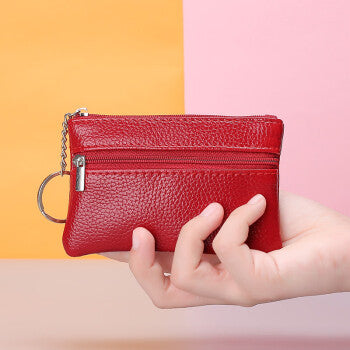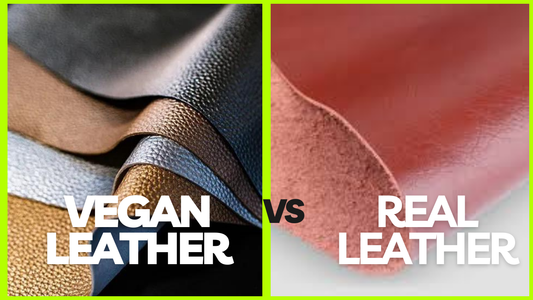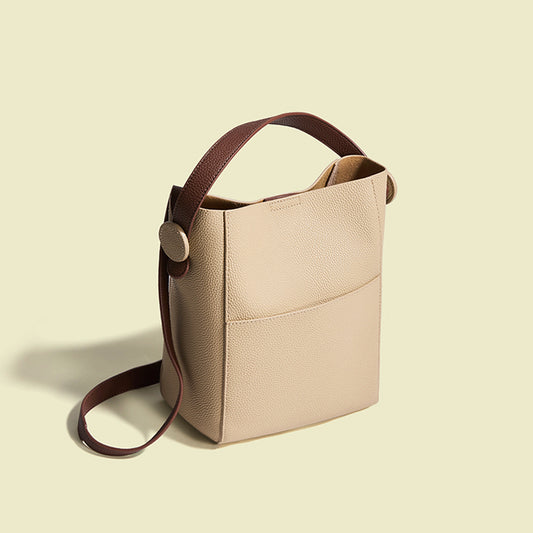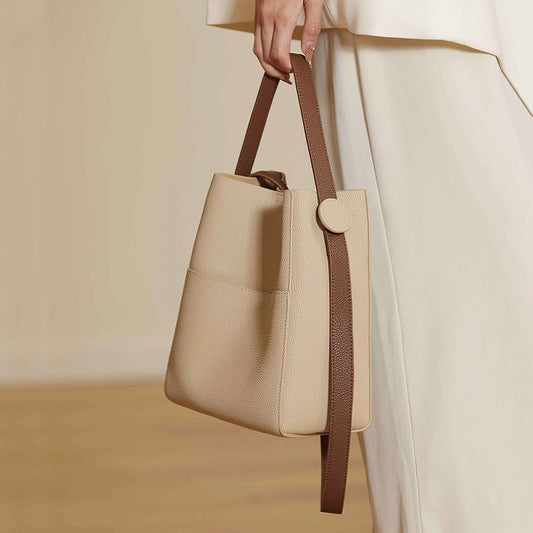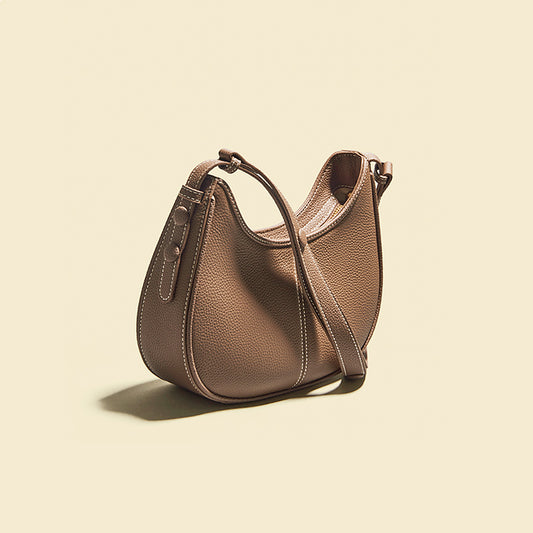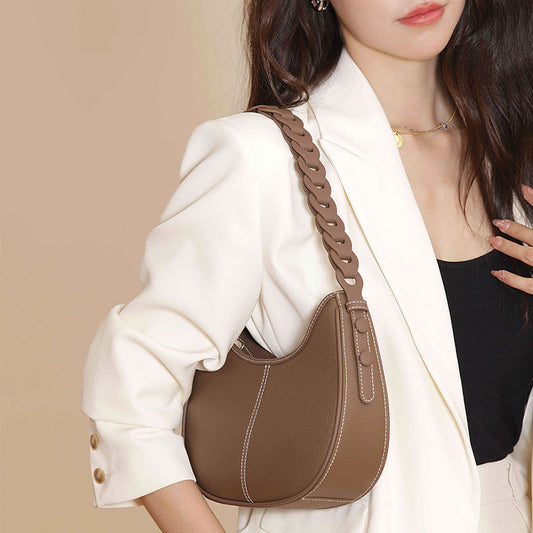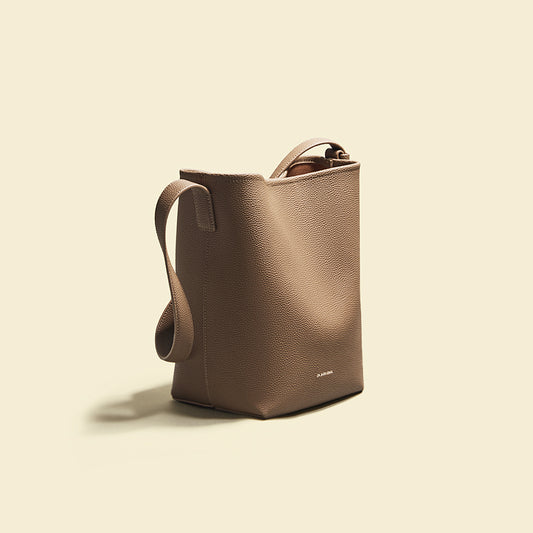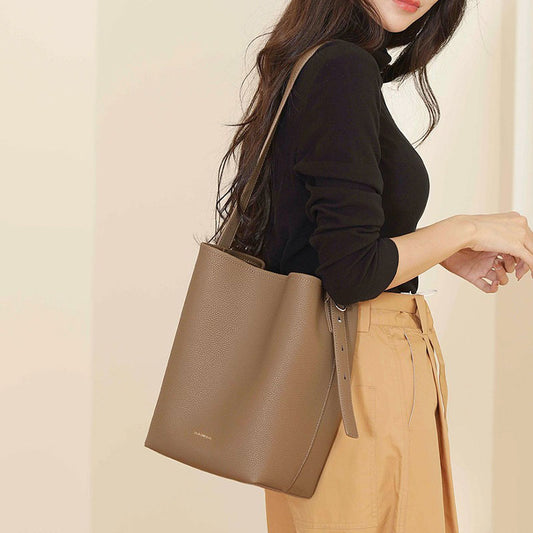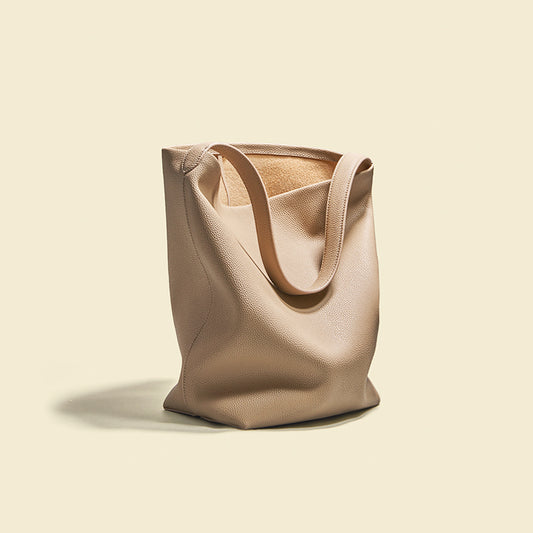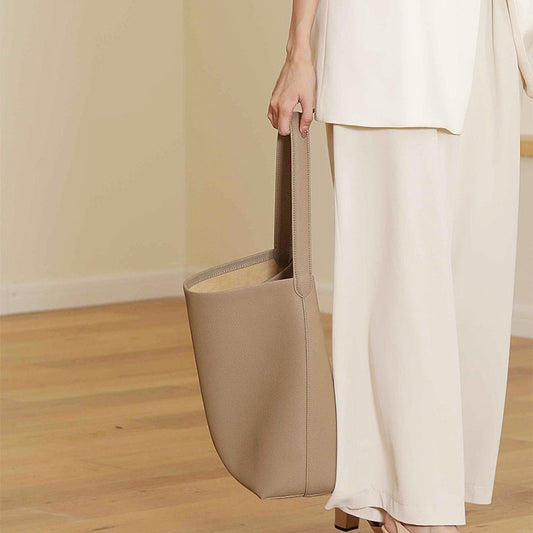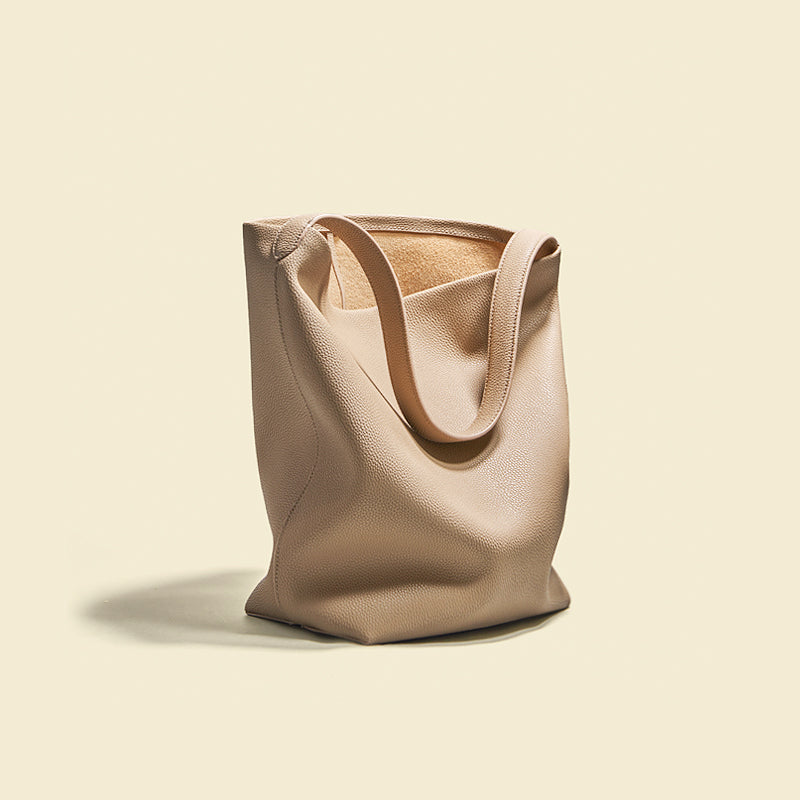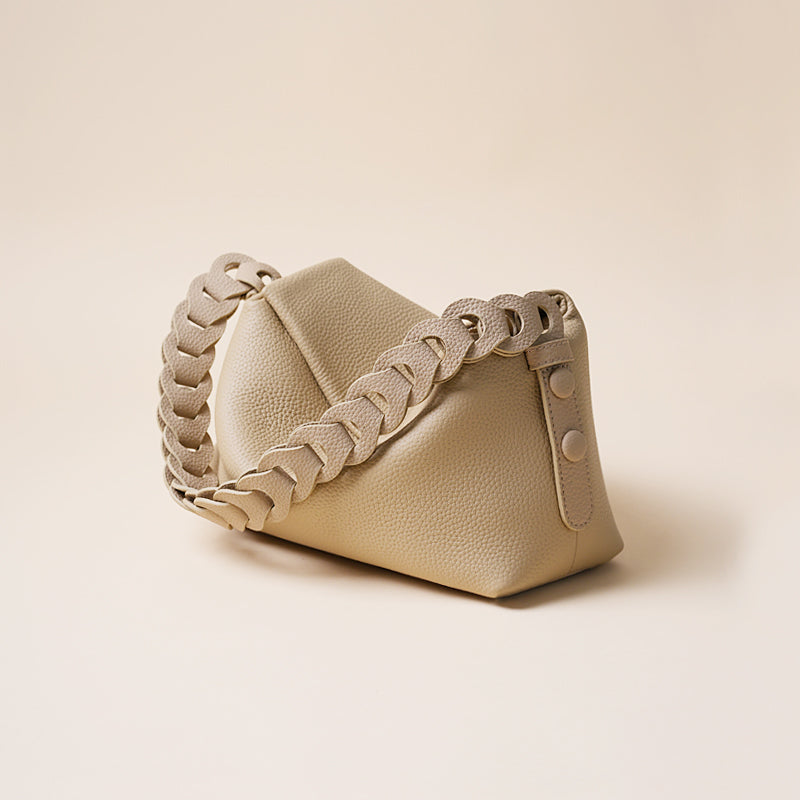A novice may run into certain challenges while selecting leather for DIY projects or when just buying anything made of real animal skins. You've probably seen leather with the designation "full-grain." The following discussion will focus on the qualities and care procedures for full-grain leather kinds.
What is full-grain leather, exactly?
Cow or swine skins are used to make the raw material for full-grain or granular leather. This full-grain leather is made from calfskin and cow hides, with a polish that is just about perfect. This leather kind is given a rough texture, similar to little pebbles or grains, via special presses. Often, the leather type is treated with fats and waxes along the road to provide it with resistance to moisture and pollution.
Full-grain leather technically falls under the category of leather with a treated surface, but this should not put you off.
Full-grain leather production methods
The raw hides of animals are utilized to create full-grain leather (calf, cow, buffalo skins). Full-grain is often created by rolling the skin in special presses. The granular skin has a substantial thickness. It has a significant benefit in that it retains its form better than other varieties of leather.
The Leather Honey brand is an excellent cleaning option for anyone who has discolored or badly dirty full-grain leather products. It quickly removes dirt and grime, resulting in a superb repair job.
The lack of grinding or peeling of the upper or lower layers is a technical element of the processing of animal skins into full-grain leather. As a result, the material stays thick and robust. It retains its form better. It's also more resistant to mechanical stress. Regardless of the thickness of the skins utilized, this method produces a supple and elastic leather material.
How can you know whether a piece of leather is full-grain?
Granular leather is created from the unpolished top layer of animal hides. Because full-grain leather hides are thicker and smoother, this leather variety preserves its inherent structure and pattern. Calfskin, for example, preserves its form better and is more resilient than other leather varieties. Full-grain leather is less susceptible to water because of its excellent breathability. Furthermore, because of the continual wear of shoes, this material may develop a natural patina.
By the way, the short answer is no, full-grain leather is not vegan. Genuine leather is always created from the skins of animals.
Full-grain leather properties
The rough feel of authentic full-grain leather is why so many artisans use it for producing shoes and accessories. When it comes to creating shoes, the material's robust structure and wear resistance are valued (like full-grain leather boots). Full-grain leather shoes feature all of the benefits of genuine leather products:
- The capacity to "adapt" naturally to the shape of the wearer's foot; Excellent water resistance; Low heat conductivity; Dirt resistance;
- Excellent texture and look;
For a buyer, the main benefit of full-grain leather sheets is their long service life. The granular nature of this substance is its most noticeable feature. Such leather has a natural pattern and structure since the top layer of the animal leather skins is utilized to produce it. Full-grain leather breathes well and does not absorb moisture readily. Clothes and shoes made of full-grain leather may be worn outside in the rain since it is quite durable and can endure for a very long period.
Buffalo or calf skins are used to make full-grain leather to disguise the variability of the leather pattern or to increase its "graininess." In this scenario, an embossed pattern is created with a specific "grain" size. The textile industry now manufactures a broad range of artificial aniline and semi-aniline leather types that may be used as a replacement for genuine leather.
They have the appearance of natural materials while being more resistant to moisture and pollutants. Perforation of such materials enables the preservation of a pleasant microclimate within leather items.
Colors of natural full-grain leather
Brown is the traditional hue for full-grain leather. But there are many shades of brown, from dark chocolate to a mild, almost reddish palette. Undyed leather in black is also available, although brown leather is more realistic.
Such goods are painted in natural tones of brown, and less frequently black, to imitate maximum naturalness. Bright hues appear much better when they've been etched or embossed.
Full-grain leather has the following advantages:
- Water and dirt resistant;
- Easy to keep in top shape;
- Good heat insulation;
- Good breathability
The excellent grade of this leather kind, like any other, varies widely. This means that some shoes manufactured of such leather may not be completely waterproof, wear-resistant, or breathable. The main qualities are determined by the animal skins used.
This leather material is often resistant to rain, dirt, and slush, and it is also simple to maintain. It is resistant to salt and chemicals that are dispersed around in the winter, although it is always best to avoid the area where they are spread. Furthermore, this material provides exceptional thermal insulation while yet being able to "breathe."
Full-grain leather has certain drawbacks.
There is most likely one disadvantage - its look. Shoes made of such leather, for example, will not complement any business attire. Grained leather briefcases, on the other hand, might appear rather official. Otherwise, these casual outfits clash with smooth woolen textiles. Additionally, this material is inappropriate for summer and hot weather since it is warmer than conventional smooth leather.
Where can you find full-grain leather?
Full-grain leather has a distinctive texture and is rather robust and resistant to external forces. The texture might be natural, although it is usually polished using specialized equipment. This material has been intentionally textured to increase its durability. Genuine full-grain leather is used to create men's casual shoes, men's and women's leather purses, backpacks, briefcases, women's shoes, and various accessories (belts, wallets, and so on). Full-grain leather wallets also look great.
Full-grain split leather
The raw material used to manufacture full-grain leather is often not the top layer of animal skins, but the lower layer known as a split. Split full-grain leather is less durable than material made from the top layer of the animal's skin, but it is also less costly. Chrome or a combination of chrome and vegan polish can be used to tan full-grain grain leather.
The compatibility of full-grain leather with different materials
In the city, full-grain leather looks pretty stylish, yet it clashes with business-casual wear. The velveteen, tweed, moleskin, wool flannel, denim, cotton, and wool - but not too thin - are suggested combinations for this leather by stylists.
Flax is a poor option since it is connected with heat and summer, but full-grain leather is associated with rain and fall. It can be effective to wear a cotton and linen combination, especially if it doesn't seem to be too warm.
Tips for caring for full-grain leather:
- If you need to clean full-grain leather shoes, dust them with a clean, dry cloth before cleaning them.
- Then, using a soft moist cloth, massage in a gentle circular motion to remove any filth or dirt.
- If the leather has become hard or rough (particularly in a dry region), you may rejuvenate it with olive oil and a clean soft cloth.
- Remember that this material is not completely waterproof. After going out in the rain or snow, wipe out your damp shoes or clothes with a dry cotton rag. Then, place the shoes or garments somewhere light yet dark. After it has completely dried, apply a few drops of olive oil to it.
Conclusion
Among shoemakers, full-grain leather is highly popular. This material's leather DIY projects have a lovely, grainy texture and various features such as durability and water repellency. When selecting a leather material in a store, whether offline or online, pay attention to the label. Also, buy from reputable businesses that provide genuine leather products at reasonable prices.


